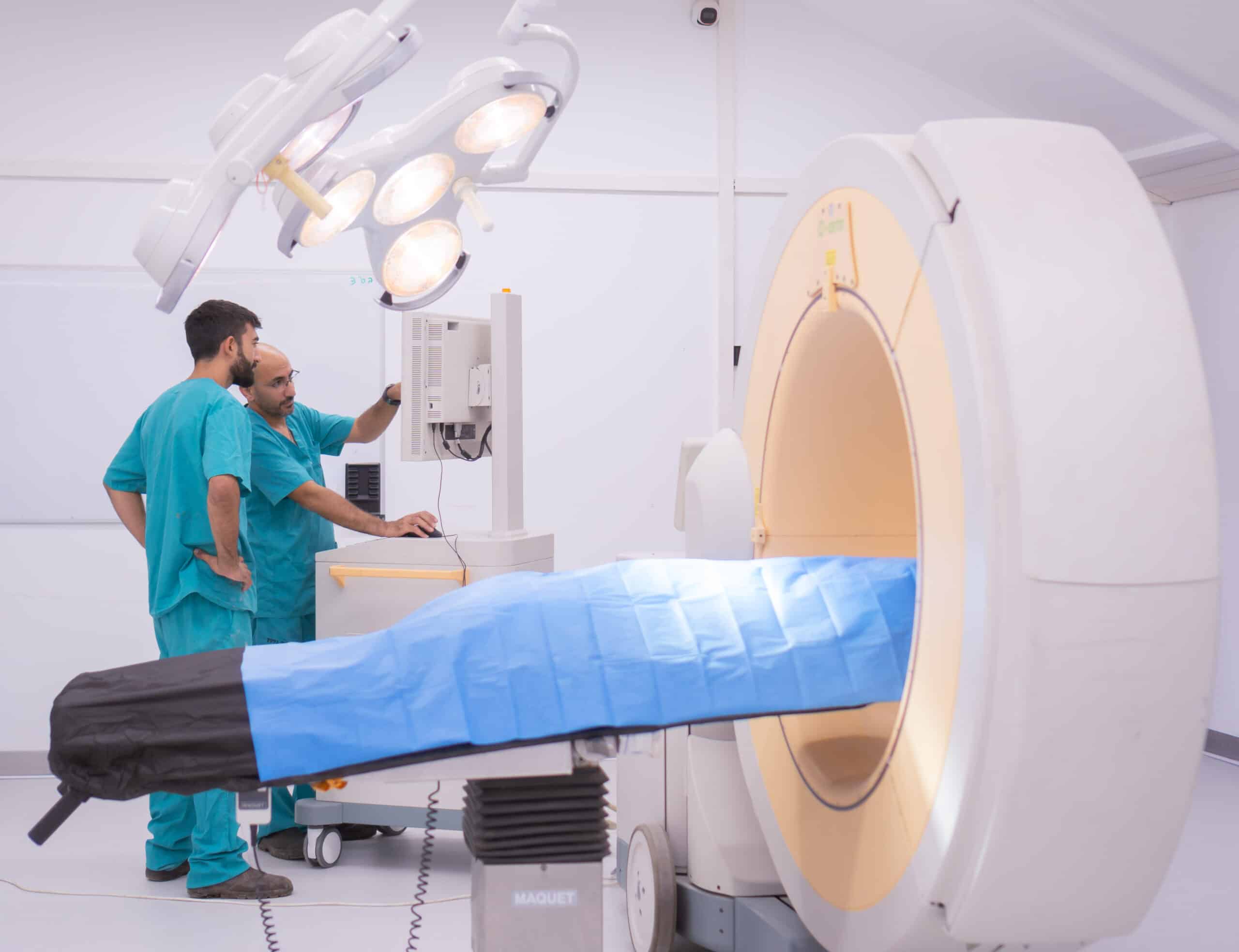Ex Vivo Studies: Pioneering Personalized Medicine & Disease Research
Ex vivo studies serve as a critical bridge in scientific research, offering a middle ground between in vitro and in vivo methodologies. They allow us to explore biological processes with a level of complexity that closely mirrors that of a living organism.
Our expertise in ex vivo techniques enables us to dissect the intricate workings of cells and tissues outside their natural environment. We can analyze gene and protein expressions, quantify cell compounds, and separate cells from tissues, providing valuable insights that drive drug development forward.
By maintaining the cytoarchitecture and intercellular connections, ex vivo tissue cultures give us a more accurate representation of how metabolic processes occur within the body. This fidelity to the in vivo state is invaluable for our understanding of disease mechanisms and the testing of potential treatments.
The Importance of Ex Vivo Studies
As experts in the field, we recognize that ex vivo studies represent an invaluable tool bridging the gap between in vitro and in vivo research. These models maintain the intricate cytoarchitecture and the necessary cellular connections, which are fundamental for an accurate representation of organism-level metabolic processes. Our commitment to leveraging these studies stems from their profound impact on expanding our understanding of biological behaviors within tissues.
Ex vivo studies stand out in their ability to generate data that is more reflective of in vivo conditions. This is particularly vital in dermatology and pharmacology where the accurate prediction of a drug’s efficacy is paramount. By selecting the most promising lead drug candidates early on, we significantly reduce both the time and the financial investment typically associated with drug development.
We prioritize these models for their distinctive features compared to in vitro studies. Here is a comparative overview of their characteristics:
| Feature | In Vitro | Ex Vivo
|
|---|---|---|
| Complexity | Range from simple to complex models | Closer to in vivo complexity |
| Cellular Context | Often isolated cells or simplified cocultures | Original tissue architecture preserved |
In our services, we employ a variety of ex vivo models, from musculoskeletal tissues to meniscal defects, to simulate and study complex biological processes. Our innovative approaches, such as optimizing culture media conditions, demonstrate our commitment to providing a robust foundation for tissue explant studies.
For instance, by integrating cellulose scaffolds with human cartilage progenitor cells, we have shed light on the potential to improve tissue repair and scaffold integration. Moreover, we have observed that treated meniscal explants can enhance the tensile strength of tissue interfaces—critical information for the advancement of regenerative medicine.
Our dedication to ex vivo studies underscores our belief in their transformative potential for the future of drug development and therapeutic interventions. With each experiment, we uncover more about the intricacies of tissue behavior, helping to accelerate the journey from the lab bench to clinical application.
Bridging the Gap: Ex Vivo vs. In Vitro and In Vivo
Our understanding of human biology and disease has expanded significantly thanks to various research models. Distinct from in vitro assays, ex vivo studies offer an intricate glimpse into the body’s complexity by using tissues straight from an organism. Unlike in vivo studies that examine living organisms in their entirety, ex vivo research isolates tissues, preserving their intricate architecture and cellular interactions, while remaining outside a living host. This approach brings forth a symphony of benefits that we can’t ignore.
We’ve recognized that while in vitro studies are valuable, they’re often simplified versions of biological systems, utilizing primarily isolated cells. In contrast, ex vivo models maintain the multifaceted crosstalk among different cell types, a feature pivotal for accurate disease modeling. Our adoption of ex vivo techniques enhances the fidelity of our data to real-life biology. We’ve witnessed firsthand how this method provides insights that are simply unattainable with other types of studies.
For example, the IntesTINE system promises to significantly advance our understanding of bacterial-host interactions within gastrointestinal tissue. Despite the need for further validation, its potential shines as a physiologically relevant tool. Even with limitations like the viability window, as seen with Ussing chambers limiting analysis to a few hours, we leverage these models’ strengths to extract vital data on cellular transport and resistance.
Moreover, the surge in ex vivo studies combats the previously prevalent in vitro focus, as indicated by the high frequency of “in vitro” in scientific literature. Our approach to ex vivo studies keeps us at the cutting edge of science, ensuring we maintain the originality of the tissue and the least alteration from the natural state of the organism. By bridging the gap between in vitro and in vivo models, we’re not only advancing research but also honing the precision medicine paradigm.
It’s clear that ex vivo systems are crucial in our quest to model human diseases more accurately. While each model has its advantages and limitations, it’s our adept handling of these systems that propels progress. We embrace the complexity of ex vivo studies as it leads to a diverse and dynamic understanding of biological phenomena beyond what was previously imagined. Through meticulous analysis and continuous refinement of our techniques, we march forward, unlocking new realms in scientific discovery.
Exploring Biological Processes Outside the Living Organism
Ex vivo studies have emerged as an indispensable approach for researchers to investigate the complexities of biological tissues in an environment that closely mimics their natural state. These studies represent a balance between in vitro simplicity and in vivo complexity, allowing for focused examinations of biological processes.
Precision Control and Isolation of Variables
One of the salient benefits of ex vivo studies is the ability to exert precision control over experimental conditions. This ensures that the tissue’s response to specific external stimuli can be investigated in a manner that’s not feasible in a live organism. For instance, examining the effects of defined physical deformations on tissue can yield insights into its biomechanical properties. Similarly, applying selected chemical factors can help decode how tissues react to various pharmacological agents.
Longitudinal Assessments and Tissue Accessibility
Another advantage is the ease of monitoring changes in tissue over time, offering a clear image of the progression or regression of biological processes. Enhanced access to the tissue of interest facilitates not just observation but also the extraction of high-quality data. It’s through this longitudinal lens that we can watch the unfolding of a tissue’s behavior, revealing both short-term reactions and long-term adaptations.
Bridging Knowledge Gaps
The use of ex vivo studies also bridges significant knowledge gaps that other experimental models can’t fill. While in vitro studies provide insights on a cellular level, they often lack the structural and functional intricacies of actual tissues. Similarly, in vivo studies encompass the full spectrum of biological complexity but can mask the nuanced responses of individual tissues due to systemic interactions. Ex vivo models envelop an ideal middle ground, capturing the tissue’s authentic characteristics without extraneous systemic noise.
By conducting ex vivo studies, we move closer to discerning the intricate dance between cells, tissues, and their responses to external stimuli. Our understanding of biological processes is significantly enhanced as we observe tissues outside the living organism yet preserve the context of their natural interactions. With this knowledge, the potential for developing novel therapeutic strategies and refining existing ones becomes ever more tangible.
Techniques for Ex Vivo Study
In the realm of scientific discovery, we’ve seen firsthand the evolution of research methodologies, and ex vivo studies stand out as a prominent example. These studies offer us the means to delve into human physiology with a precision that replicates in vivo conditions far better than traditional in vitro methods.
Dynamic Physiological Culture Techniques have revolutionized how we approach primary human tissue. This innovation enables us to not only sustain the longevity of tissue cultures but also to maintain their native functions outside of the human body. By mimicking natural physiological processes, these techniques preserve the integrity and viability of tissues under study.
Each tissue type comes with its own set of requirements. Therefore, it’s crucial that we tailor the culturing system to align with the specific physiological processes of the tissue we’re examining. Establishing optimal culture conditions and physiological parameters is a continuous endeavor, driving us to refine our methods further.
Intestinal Ex Vivo Models are particularly noteworthy, as they provide us with a toolbox of techniques like the everted gut sac model and Ussing chamber method. These models enable us to investigate drug uptake in the intestine without the ethical and biological complications of in vivo testing.
Despite the significant value these methods provide, they have not yet been widely acknowledged as alternatives to traditional animal testing methods. Our objective remains to bridge this gap and ensure that these ex vivo techniques are recognized for their potential in reducing and replacing animal experiments.
These models offer us a glimpse into the intricacies of human gut physiology and the layers of complexity within. For instance, the Mucus Barrier Model stands as a testament to the utility of these studies, by allowing us to observe rapid reactions and interactions that occur within the gastrointestinal landscape.
We understand that every ex vivo study calls for a meticulous approach to faithfully replicate the in vivo environment. As such, we remain committed to enhancing the sophistication of our techniques to uphold the highest standards of research excellence.
Advantages of Ex Vivo Tissue Cultures
Ex vivo tissue cultures serve as a critical bridge between the simplicity of in vitro studies and the complexity inherent in in vivo research. Clift et al., (2011) describe ex vivo as a model where tissue slices are cultured to maintain their cytoarchitecture, preserving intercellular connections and metabolic processes which more closely mimic the in vivo environment. This hybrid system leverages the control and precision of in vitro systems while facilitating a more accurate prediction of how substances, like drugs or chemicals, behave in a living organism.
Significantly, the use of organotypical slice cultures—as mentioned by Runden et al., (1998)—allows for the retention of original tissue architecture. This is vital in studying metabolic processes as these processes more authentically represent the in vivo state. Furthermore, ex vivo studies enable the examination of complex biological responses in isolation—a step closer to the natural dynamics present within living organisms.
Our focus incorporates the use of blood samples and the cultivation of lymphocytes ex vivo, providing insights into the immune response and disease pathology. These practices are instrumental in fields like immunotherapy, wherein the fine-tuning of treatment requires a thorough understanding of the immune system’s behavior against pathogens.
For ocular research, the ex vivo model is indispensable. We adhere to the OECD test guideline 437, utilizing bovine corneas from slaughtered animals to assess the potential corrosiveness of substances without the ethical ramifications of live animal testing. This approach respects both scientific rigor and animal welfare, balancing innovation with ethical responsibility.
Integrating coculture systems that endure various cell types is also at the core of our services. These systems are engineered to simulate in vivo barriers, creating a sophisticated platform for investigating mechanics like nanoparticle (NP) uptake. Our methodologies are continually refined to ensure that ex vivo studies at Biotech Farm remain at the forefront of advancing translational research.
Understanding Disease Mechanisms through Ex Vivo Studies
Ex vivo studies serve a pivotal role in comprehending the complexity of disease mechanisms. We harness this sophisticated approach to dissect the interactions between host cells and pathogens — insights that are critical for developing resilient strategies against diseases and optimizing health outcomes.
Leveraging host-gut microbiome insights, we’ve focused on more than chronic illnesses; we’re probing into the effects of transient stress on physical and cognitive performance. That’s particularly valuable for military and athletic applications, where peak performance under stress is not just an advantage but often a necessity.
The adaptive use of ex vivo models allows us to simulate real-life conditions in a controlled environment. In doing so, we delve into the nuances of host-pathogenic and host-commensal bacterial interactions. These interactions are the building blocks of understanding diseases at a molecular level. With this knowledge, we’re not just chasing symptoms but uncovering the roots of health issues.
By integrating findings from studies with germ-free mice and applying them to our ex vivo cultures, we enhance the relevance of our models to human biology. As we know, the consistency of data derived from rodent studies often doesn’t translate directly to humans. Ex Vivo Studies attempt to bridge this gap, offering a glimpse into the actual dynamism within the human body.
These sophisticated techniques not only aid us in understanding disease but also in the therapeutic process. Our collaborative team is focused on precision medicine — testing drugs on tumors before the patient ever begins treatment. This process, deeply rooted in genomics, ensures personalized therapy with enhanced efficacy and safety profiles.
At Biotech Farm, our robust Ex Vivo framework is instrumental in bringing these analytical and therapeutic processes closer to clinical reality. We’re determined to eliminate the trial-and-error approach of current medical treatments, sparing patients from unnecessary exposure to potentially toxic drugs. Our effort is ceaseless in providing strategies tailored to the unique genetic narratives of each tumor, propelling us toward a future where treatments are as individualized as the diseases they target.
Testing Potential Treatments with Ex Vivo Models
In the pursuit of personalized medicine, ex vivo studies present a powerful tool for evaluating the efficacy of potential treatments. Our comprehensive approach at Biotech Farm harnesses the unique capabilities of ex vivo models to screen therapeutic options tailored to individual patients’ tumors. We create miniature replicas of tumors and examine the full genomic narrative to select the most effective treatments for each patient.
By testing drugs on these tumor replicas before introducing them to the patient, we significantly reduce the risks associated with traditional trial-and-error methodologies. This strategy is not only patient-centric but also pivotal in minimizing exposure to possibly ineffective and toxic drugs. Our objective is to transition ex vivo studies into standard clinical practice, providing a safer, more precise course of action for treatment.
- Genomic Analysis: We start by deciphering the complete genomic analysis of the patient’s tumor cells.
- Tumor Replicas: A miniature replica of the tumor is then engineered, mirroring the patient’s unique cancer environment.
- Therapy Testing: A variety of therapies are tested on these replicas, offering insights into the most promising treatments.
| Studies | Attributes
|
|---|---|
| In Vitro | Monocellular and multicellular culture models, including 3D organotypic models. |
| Ex Vivo | Hosts more complex tissue architecture, allowing for more representative tests of drug efficacy. |
Contrary to in vitro settings, ex vivo models embody a more sophisticated tissue architecture, enabling us to unveil the interactions that underpin disease mechanisms. In dermatology and pharmacology, these models have accelerated drug development by offering reliable indicators of in vivo efficacy, aiding in the refinement of lead drug candidates.
The implications of ex vivo studies are vast, extending from military applications, where we explore the effects of stress on physical and cognitive performance, to precision medicine, where individually crafted treatments could herald a new era in healthcare. Our work with ex vivo models at Biotech Farm embodies our commitment to driving translational research that bridges laboratory findings with clinical implementation, ensuring that the thrust of scientific discovery propels toward improving patient outcomes.
Conclusion
We’ve seen how ex vivo studies serve as a crucial bridge between basic research and clinical applications, offering a glimpse into the future of personalized medicine. They’re reshaping our approach to disease treatment, allowing us to test therapies in a patient-specific context. Our work at Biotech Farm is at the forefront of this innovation, pushing the boundaries of what’s possible in medical science.
As we continue to refine these techniques, we’re committed to improving patient outcomes and streamlining the path from laboratory discovery to bedside application. Through our dedication to ex vivo research, we’re not just envisioning a new paradigm in healthcare—we’re actively building it.





